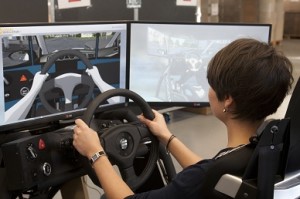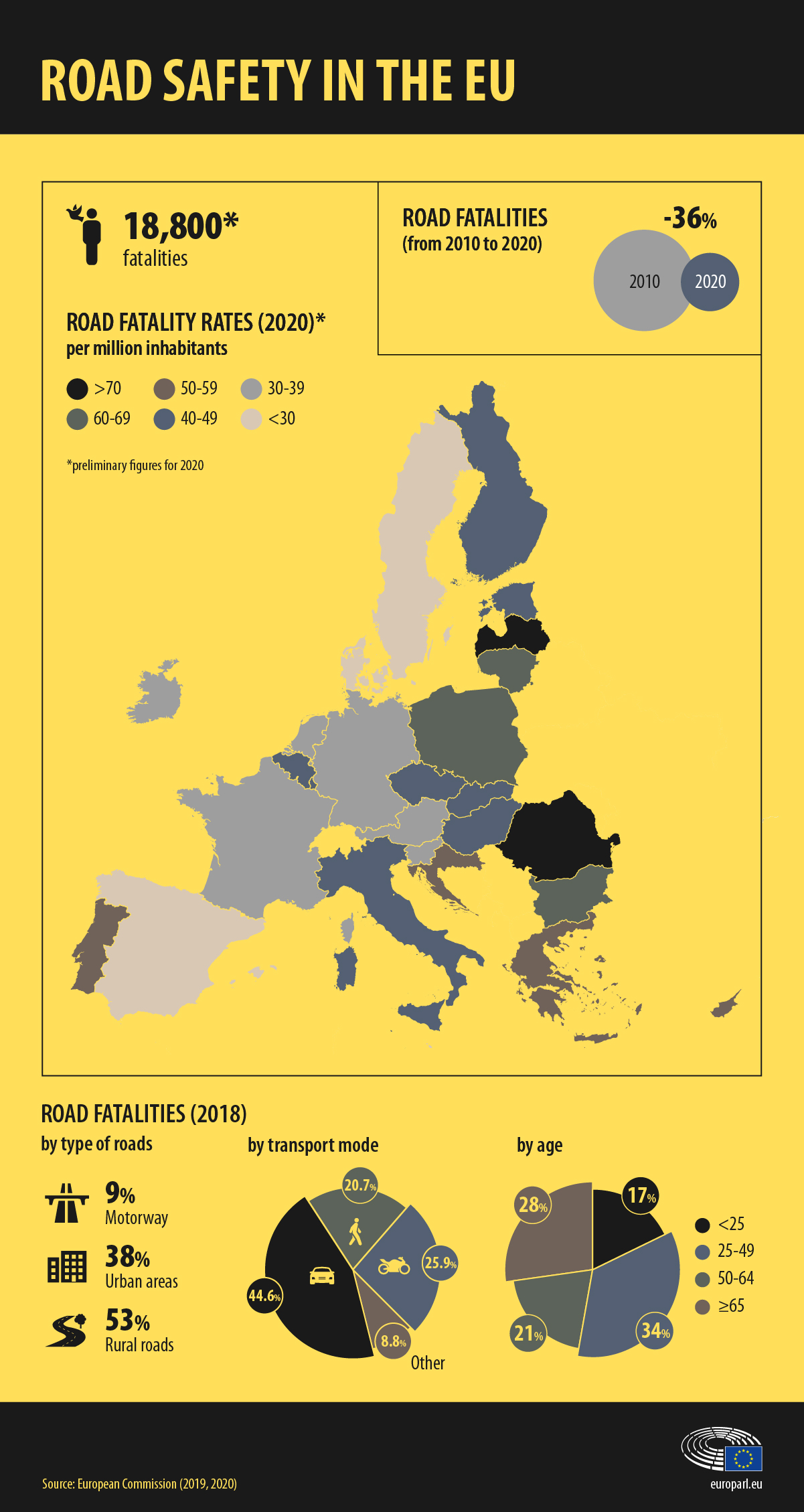Welcome to the MOVING archive,
here you can find older infromation about the following topics::
- Driving license classes
- Table of driving license classes
- Driving education
- detailed description of driving training (PDF from 2013 [GER])
- Use of driving simulators
- Simulator study from 2016 (new study in progress)
- Legal regulations
- various legal conditions for driving training, driving license, professional drivers
Data in the archive is not regularly checked for up-to-dateness and revised.
Driving license classes:
| Class | Vehicle type |
| AM | Mopeds and bicycles with auxiliary motor up to 50 ccm (or electric motor) and up to 45 km/h (mokick, moped/scooter) as well as three-wheeled mopeds and four-wheeled light motor vehicles with a maximum speed of not more than 45 km/h determined by the type of construction. |
| A1 | Motorcycles up to 125 cc and up to 11 kW rated power (light motorcycles) |
| A2 | Motorcycles with engine power not exceeding 35 kW |
| A | Motorcycles over 50 ccm or over 45 km/h, also with sidecar |
| B | Motor vehicles up to 3.5 t and with no more than eight seats (excluding the driver’s seat), also with trailers with a maximum gross weight of either up to 750 kg or up to the unladen weight of the towing vehicle, in which case the maximum gross weight of the combination (e.g. car with caravan) may not exceed 3.5 t |
| C | Motor vehicles (trucks) over 3.5 t and with no more than eight seats (incl. driver’s seat), also with trailers up to 750kg total mass |
| C1 | Motor vehicles (trucks) over 3.5 t up to max. 7.5 t and with no more than eight seats (incl. driver’s seat), also with trailers up to 750kg total mass |
| D | all buses, also with more than 16 seats (incl. driver’s seat) and trailers up to 750kg total mass |
| D1 | buses up to max. 16 seats (incl. driver’s seat) and trailers up to 750 kg total mass |
| BE, CE, C1E, DE and D1E | Motor vehicles in classes B, C, C1, D or D1 with trailers over 750 kg total mass |
| L | Tractors up to max. 32 km/h (with trailer 25 km/h) and self-propelled machines up to 25 km/h as well as combinations of these vehicles and trailers |
| T | Tractors also over 32 km/h, but not more than 40 km/h, self-propelled working machines for lof purposes up to 40 km/h, in each case also with trailers. |
Driver’s license training:
Driving permits and licenses have been issued in Germany for over 100 years. If you want to know more about it, please click here:
Driver’s license training and obtaining a driver’s license in Germany. [GER]
Use of driving simulators:
 A study commissioned by MOVING from the Institute of Automotive Economics (IFA) on the use of driving simulators in driving schools for driving license class B (passenger cars) concludes that the use of a driving simulator in learner driver training can be a useful addition to instruction.
A study commissioned by MOVING from the Institute of Automotive Economics (IFA) on the use of driving simulators in driving schools for driving license class B (passenger cars) concludes that the use of a driving simulator in learner driver training can be a useful addition to instruction.
The most important results of the study:
Currently, the driving school industry is facing a declining number of learner drivers and profound structural problems. The declining number of driving schools in Germany should be seen as evidence of intensifying competition. At the same time, practical driving training, which has been structured almost unchanged for decades, is being critically scrutinized in many respects. Against this background, this study presents analyses and possible solutions based on the use of simulators in driving schools. In summary, the central research findings of the study can be presented at this point as follows:
- Performance of simulators in driving education.
The market for driving simulators is broadly based with an extensive product range. The individual simulators vary considerably in terms of their configuration and the intended use. It must be stated that some of the products on offer are probably not up to the standard required for professional use in driving schools and are more suitable as computer games. Nevertheless, the range of high-quality products with the potential to usefully supplement practical driving training is available. The results of the analysis, which are directed towards this, come to the conclusion that serious offers exist, which guarantee a professional and high-quality training.
- Usefulness of the use of driving simulators in driving training
The usefulness of using driving simulators in driving schools depends to a large extent on the scope of use. High-tech simulators can be said to have a high educational potential, although they are not able to replace driving instructors – especially with regard to empathic aspects and necessary social contacts during training. However, driving simulators can help to reduce fears of real traffic in a “stress-free” way. Driving simulators create a basic understanding of traffic as well as with regard to routines in handling the vehicle. If the simulator is used in this context prior to the first real driving lessons and subsequently as an accompaniment to practice, its use can be assessed as sensible. Nevertheless, it should be noted that driving simulators cannot – and should not – fully replace training in a real vehicle.
- Demand and supply-side market potential for the use of driving simulators in driving schools
In the course of the surveys for the study, 72 percent of the learner drivers questioned expressed a willingness to replace practice hours in a real vehicle with driving simulator hours in principle. Around 70 percent of those responsible for driving schools say they have already looked into the subject in detail, and 49 percent are currently considering investing in a driving simulator. In view of these data, it is possible to speak of a relevant market on both sides.
- Opinion of driving school owners and learner drivers on the use of driving simulators in driver training
A generally valid answer to this question is difficult due to the complexity of questions and answers. However, when the results of the survey are viewed as a whole, a positive overall attitude toward the driving simulator prevails among both driving schools and learner drivers.
- Cost-benefit ratio from the customer’s perspective
The monetary effect in terms of a smaller budget for obtaining a driver’s license can be demonstrated, but it is small. The results of the study show that savings of up to around two percent of the expenditure normally required can be made. For learner drivers, there is also a shorter training period – 21 days on average – and a lower number of “real driving hours” – around four driving hours (45 min. each).
- Socio-economic effects from the customer’s perspective
Of particular importance are the demonstrably lower “repeat rates” for the practical and theory tests. The success rate of the “pilot driving simulator” driving schools is up to seven percentage points higher than that of comparable driving schools. Furthermore, the additional quality in terms of the large number of driving situations that can be depicted using a simulator and the “time density” of relevant exercises, which often cannot be depicted in real traffic, should be pointed out. The “environmental effect” – i.e. less energy consumption and emissions as well as less wear and tear on vehicles due to a lower number of “real driving hours” per learner driver – should also be mentioned as an advantage argument.
- Economic viability of the use of driving simulators
The calculations show that the driving simulator can contribute significantly to the “rationalization” of individual driving school operations. There is the opportunity to look after additional learner drivers by freeing up time, which has a significant positive impact on sales and earnings. In addition, the contribution margins of the driving simulator hours are at a high level. The calculations at different operation sizes prove that simulator offers lead to additional contribution margins: In the smallest operation scenario, profit contributions increase by just under €29, and in the largest driving school operation included in the analyses by around €80 per customer. A further, significant optimization of the operating result can be achieved by acquiring additional customers – with the same personnel and material resources. In addition, the calculations show that the price positioning for the individual simulator hour represents a significant lever for increasing the profitability of driving school operations. When positioning prices, the competitive situation as well as market acceptance must be taken into account.
- Success factors with regard to driving simulator deployment.
The success of driving simulator use is essentially measured by two components, namely the number of simulator hours and the satisfaction of learner drivers. The basis for successful use is detailed and consistent internal preparation with regard to infrastructural, personnel and conceptual aspects. The complete and systematic integration of the driving simulator into the training concept plays an outstanding role. However, the key factor for driving simulator integration is the driving school staff. Without their commitment and dedication, it will not be possible to ensure both the economic viability and the satisfaction of the learner drivers. Another important lever for optimizing operating results is the utilization of existing capacities. A sustainable increase in the business performance of driving school operations can only be achieved if the simulator is used consistently and, at the same time, additional learner drivers are recruited to utilize existing capacities.
Legal regulations:
Below is a selection of relevant laws, regulations and directives.
EU driving license directives
- Richtlinie 80/1263/EWG des Rates vom 4. Dezember 1980 zur Einführung eines EG-Führerscheins
- Richtlinie 91/439/EWG des Rates vom 29. Juli 1991 über den Führerschein
- Richtlinie 2006/126/EG des Europäischen Parlaments und des Rates vom 20. Dezember 2006
- Entscheidung der Kommission vom 25. August 2008 über Äquivalenzen zwischen Führerscheinklassen
Professional drivers
Laws and regulations from Germany
- Verordnung über die Zulassung von Personen zum Straßenverkehr 2010
- Fahrlehrergesetz 1969, zuletzt geändert 2011
- Durchführungsverordnung zum Fahrlehrergesetz 2012
- Gesetz über die Grundqualifikation und Weiterbildung der Fahrer bestimmter Kraftfahrzeuge für den Güterkraft- oder Personenverkehr 2006
- Verordnung zur Durchführung des Berufskraftfahrer-Qualifikations-Gesetzes 2006
- Fragen zum Berufskraftfahrerrecht (Link auf die Webseite des BAG)
- BAG-Anwendungshinweise zum Berufskraftfahrerqualifikationsgesetz (2014)
- Verordnung zur Neufassung fahrlehrrechtlicher Vorschriften und
- zur Änderung anderer straßenverkehrsrechtlicher Vorschriften (2017)







